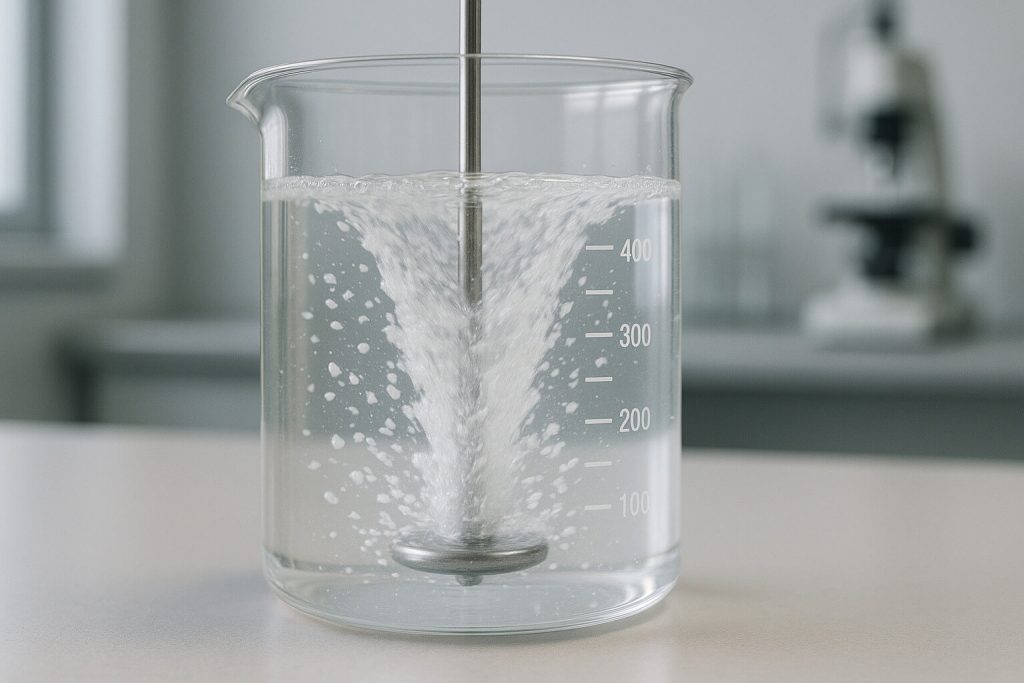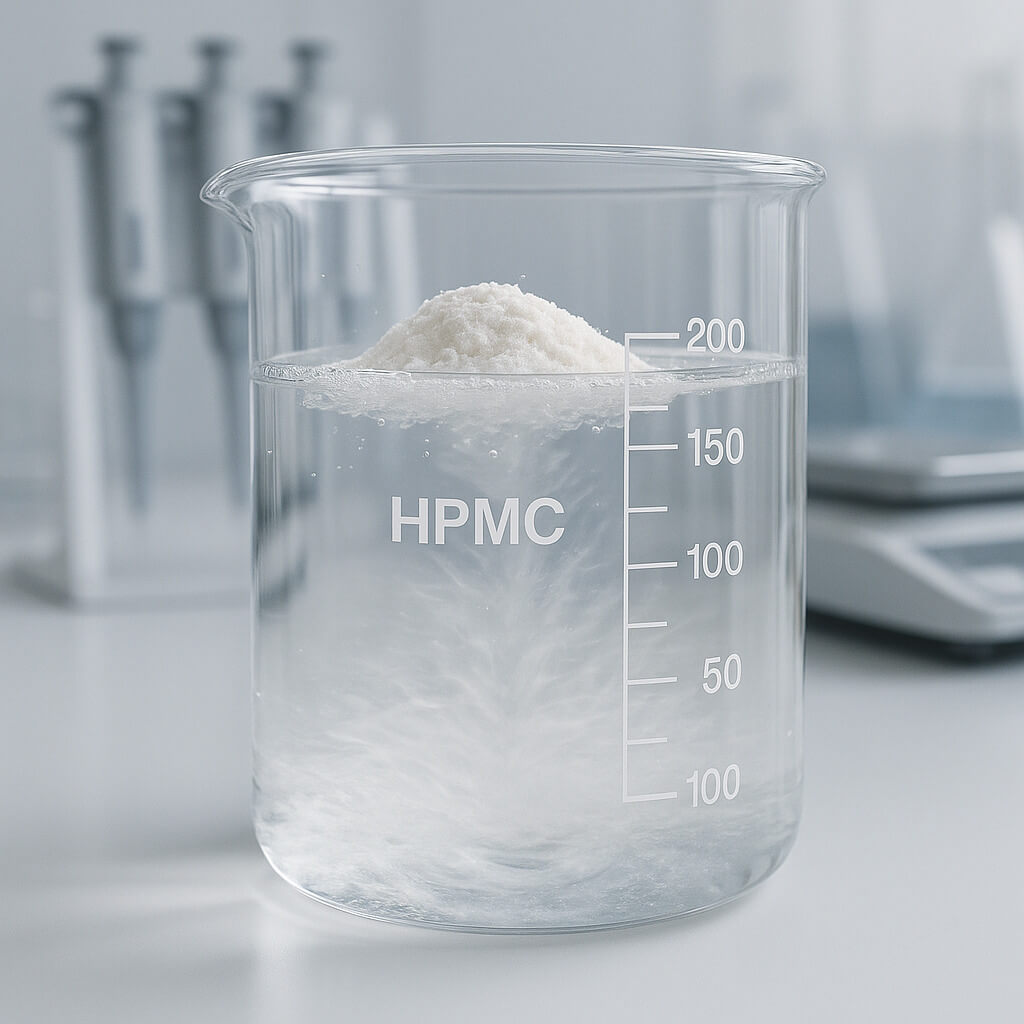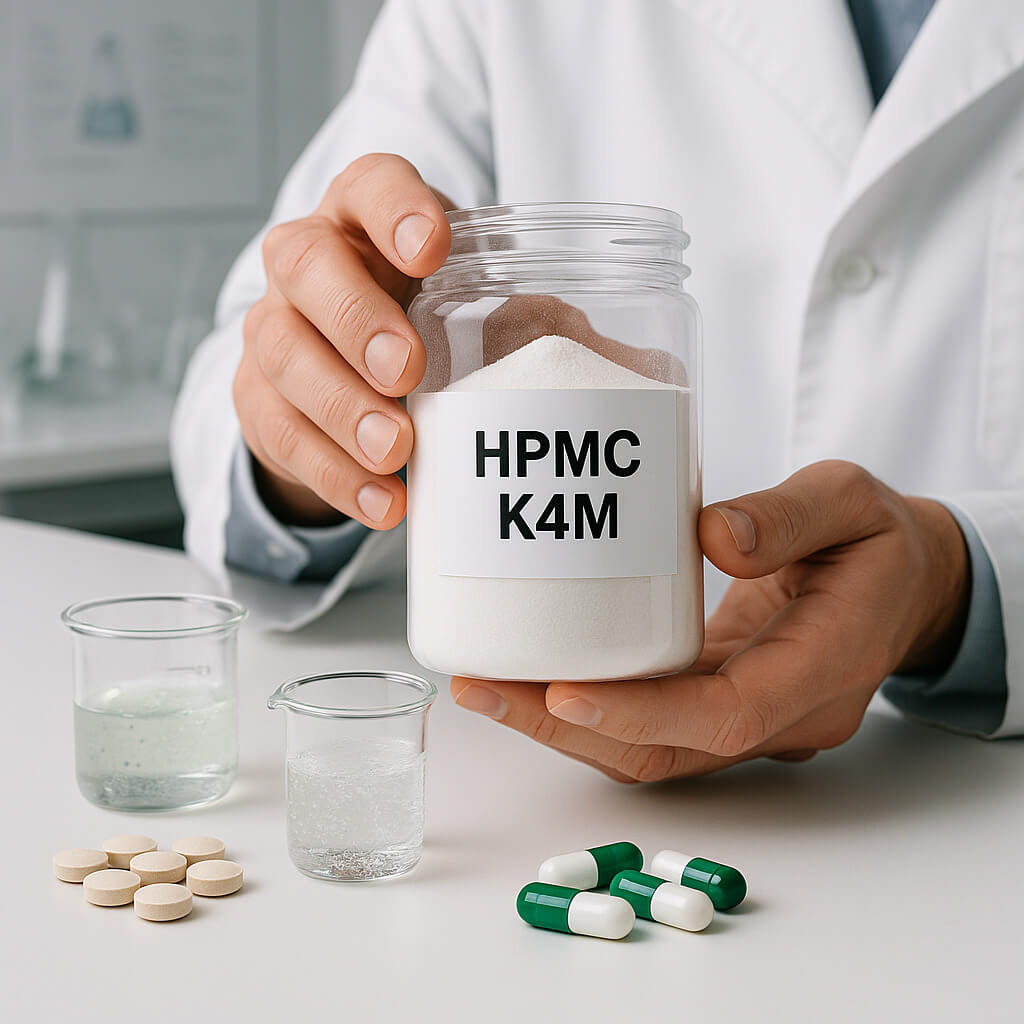Selecting the appropriate Hydroxypropyl Methylcellulose (HPMC) for your specific application can be challenging due to the variety of grades and properties available. Making the wrong choice can lead to product failures, wasted resources, and costly reformulations. This article provides a comprehensive guide to help you understand the critical factors that influence HPMC selection, from viscosity and substitution patterns to application-specific requirements. Our insights are based on industry standards and technical expertise to help you make informed decisions that optimize your formulations and manufacturing processes.

1. What Is Hydroxypropyl Methylcellulose and Why Is It Important?
Hydroxypropyl Methylcellulose (HPMC) is a semi-synthetic, non-ionic cellulose ether derived from cellulose through chemical modification. The process involves substituting hydroxyl groups with methoxyl and hydroxypropyl groups, creating a versatile polymer with unique properties. HPMC appears as a white to off-white powder that dissolves in cold water to form clear solutions with varying viscosities.
Aber hier ist die Sache: HPMC’s importance stems from its exceptional versatility across multiple industries. Its ability to function as a thickener, binder, film-former, and stabilizer makes it indispensable in countless applications.
In the construction industry, HPMC serves as a critical additive in cement-based products, providing water retention, improved workability, and enhanced adhesion. For pharmaceutical applications, it creates controlled-release matrices and film coatings for tablets. Food manufacturers rely on HPMC as a thickener, stabilizer, and emulsifier in various products.
| Eigentum | Funktion | Nutzen |
|---|---|---|
| Wasserlöslichkeit | Forms clear solutions in cold water | Easy incorporation into water-based formulations |
| Thermische Gelierung | Forms gel at elevated temperatures | Temperature-responsive release systems |
| Oberflächenaktivität | Reduces surface tension | Stabilizes emulsions and suspensions |
| Filmbildend | Creates continuous films | Coating applications and controlled release |
| Viskositätskontrolle | Thickens aqueous solutions | Improves stability and application properties |
Selecting the right HPMC grade is crucial because its properties directly impact product performance. Using an inappropriate grade can lead to formulation failures, inconsistent product quality, and manufacturing difficulties.
2. What Are the Different Grades of HPMC Available in the Market?
HPMC is available in numerous grades that vary primarily in viscosity, substitution type, and specialized properties. Understanding these differences is essential for selecting the most suitable grade for your application.
Viscosity grades range from very low (3-5 mPa·s) to extremely high (100,000+ mPa·s), measured as a 2% solution at 20°C. Low-viscosity grades provide minimal thickening but excellent film-forming properties, while high-viscosity grades deliver substantial thickening and stabilizing effects.
Sie werden überrascht sein zu erfahren that substitution types significantly affect HPMC functionality. The ratio of methoxyl (OCH₃) to hydroxypropyl (OCH₂CH(OH)CH₃) groups determines properties like gelation temperature, surface activity, and organic solubility.
| Substitutionstyp | Methoxylgehalt (%) | Hydroxypropyl-Gehalt (%) | Wichtige Eigenschaften |
|---|---|---|---|
| E-Type | 28-30 | 7-12 | Higher thermal gel temperature, good organic solubility |
| F-Type | 27-30 | 4-7.5 | Intermediate properties |
| K-Typ | 19-24 | 7-12 | Lower thermal gel temperature, better water solubility |
Pharmacopeia grades meet strict regulatory standards for pharmaceutical applications. These include USP, Ph.Eur., and JP grades, which have specified limits for viscosity, substitution, heavy metals, and microbial contamination.
Industrial grades, while not meeting pharmacopeia standards, offer cost-effective solutions for construction, textile, and certain food applications. These grades focus on functional properties rather than purity specifications.
| Anwendung | Empfohlene HPMC-Qualität | Hauptvorteil |
|---|---|---|
| Fliesenkleber | 100,000 mPa·s, K-type | Excellent water retention and open time |
| Tabletten mit kontrollierter Wirkstofffreisetzung | 4,000-15,000 mPa·s, K-type | Consistent drug release profiles |
| Food thickener | 3,000-5,000 mPa·s, E-type | Heat-stable viscosity in acidic conditions |
| Ophthalmische Lösungen | 3-15 mPa·s, E-type | Lubrication without blurring vision |
| Paint thickener | 15,000-30,000 mPa·s, F-type | Balanced viscosity and leveling properties |
3. How Do Viscosity and Molecular Weight Affect HPMC Performance?
Viscosity is perhaps the most critical parameter when selecting HPMC, as it directly correlates with molecular weight and significantly impacts performance across applications. Higher molecular weight HPMC produces more viscous solutions, creating stronger films, better water retention, and more robust controlled-release properties.
The relationship between viscosity and molecular weight follows a power law relationship: viscosity increases exponentially as molecular weight increases. This relationship means small changes in molecular weight can cause substantial changes in solution viscosity.
Folgendes ist wichtig zu verstehen: Solution properties vary dramatically across the viscosity spectrum. Low-viscosity grades (3-100 mPa·s) provide minimal thickening but excellent film formation and fast dissolution. Medium-viscosity grades (100-10,000 mPa·s) offer balanced properties suitable for most applications. High-viscosity grades (10,000-100,000+ mPa·s) deliver maximum thickening, water retention, and binding strength.
| Verfahren | Beschreibung | Anwendung |
|---|---|---|
| Rotationsviskosimeter | Measures torque required to rotate spindle in solution | Standard method for most grades |
| Capillary viscometer | Measures flow time through capillary | Niedrigviskose Typen |
| Brookfield-Viskosimeter | Multiple spindle options for different viscosity ranges | Wide range of grades |
| Rheometer | Measures complex flow behavior | Detailed characterization |
For construction applications, higher viscosity grades (15,000-100,000 mPa·s) provide optimal water retention in cement-based products. In pharmaceutical applications, the viscosity grade directly influences drug release rates from matrix tablets—higher viscosity creates more robust gel layers that slow drug diffusion.
Food applications typically use lower to medium viscosity grades (50-5,000 mPa·s) to provide thickening without excessive texture changes. Personal care products often require precisely controlled viscosity for proper application feel and product stability.
4. What Technical Parameters Should You Consider When Choosing HPMC?
Beyond viscosity, several technical parameters significantly impact HPMC performance in specific applications. Understanding these parameters helps ensure optimal functionality and prevents formulation issues.
Particle size distribution affects dissolution rate and dispersibility. Finer particles dissolve more quickly but may cause lumping during incorporation. Coarser particles disperse more easily but take longer to fully dissolve.
Die Realität ist that gel temperature (thermal gelation) is a critical parameter for many applications. HPMC solutions exhibit inverse solubility, forming gels at elevated temperatures. This property is particularly important for controlled-release pharmaceuticals and certain food applications.
| Parameter | Messmethode | Typischer Bereich | Bedeutung |
|---|---|---|---|
| Partikelgröße | Laserbeugung | 50-250 μm | Affects dissolution rate and dispersibility |
| Geltemperatur | Cloud point method | 55-90°C | Determines thermal stability of solutions |
| Methoxylgehalt | Gaschromatographie | 19-30% | Influences solubility and gelation |
| Hydroxypropyl-Gehalt | Gaschromatographie | 4-12% | Affects surface activity and organic solubility |
| Feuchtigkeitsgehalt | Trocknungsverlust | 3-5% | Impacts storage stability and handling |
pH stability is another crucial consideration. While HPMC is generally stable across a wide pH range (3-11), extreme conditions can accelerate degradation. Applications involving acidic or alkaline environments require grades with appropriate stability profiles.
The substitution pattern significantly influences functionality. More uniform substitution typically provides better solution clarity and stability. The ratio between methoxyl and hydroxypropyl content determines properties like organic solubility, surface activity, and film flexibility.
5. How Do Manufacturing Processes Influence HPMC Quality?
Manufacturing processes significantly impact HPMC quality, consistency, and performance. Understanding these influences helps in selecting suppliers and grades that meet your specific requirements.
HPMC production involves several key steps: alkalization of cellulose, etherification with methyl chloride and propylene oxide, neutralization, purification, and drying. Variations in reaction conditions, raw materials, and processing parameters affect the final product properties.
You need to know that modern production methods have evolved to improve product consistency and reduce environmental impact. Advanced process controls ensure more uniform substitution patterns and precise viscosity control.
| Quality Control Test | Zweck | Specification Example |
|---|---|---|
| Viskositätsprüfung | Ensures consistent thickening power | ±10% of target viscosity |
| Substitution analysis | Verifies correct chemical modification | Methoxyl: 28-30%, Hydroxypropyl: 7-12% |
| Geltemperatur | Confirms thermal behavior | 65-70°C for E-type |
| Partikelgrößenverteilung | Ensures proper dissolution | 90% between 50-250 μm |
| Feuchtigkeitsgehalt | Verifies proper drying | 3-5% |
Batch-to-batch consistency is crucial for manufacturing operations. Variations can lead to process adjustments, product inconsistencies, and quality issues. Leading manufacturers implement statistical process control and extensive testing to minimize variations between batches.
Impurity profiles vary based on production methods and purification steps. Pharmaceutical grades undergo more rigorous purification to remove residual reagents, heavy metals, and other contaminants. Industrial grades may contain higher levels of sodium chloride (a reaction by-product) and other impurities that don’t significantly affect functional properties.
6. What Are the Application-Specific Requirements for HPMC Selection?
Different applications have unique requirements that influence HPMC selection. Understanding these application-specific needs is essential for optimal performance.
In the construction industry, HPMC serves primarily as a water retention agent and rheology modifier in cement-based products. Key requirements include high water retention (>95%), appropriate open time, and good workability. Viscosity typically ranges from 15,000 to 100,000 mPa·s, with higher viscosities providing better water retention but potentially affecting workability.
But wait, there’s more to consider: Construction applications also require good compatibility with other additives like air entrainers, superplasticizers, and redispersible polymers. The HPMC must maintain functionality across varying temperature and humidity conditions encountered on construction sites.
| Industrie | Anwendung | Empfohlene HPMC-Eigenschaften | Key Performance Requirements |
|---|---|---|---|
| Konstruktion | Fliesenkleber | 40,000-100,000 mPa·s, high water retention | Extended open time, sag resistance, good workability |
| Konstruktion | Putze | 20,000-40,000 mPa·s, medium water retention | Workability, reduced cracking, good adhesion |
| Pharmazeutische | Kontrollierte Freisetzung | 4,000-100,000 mPa·s, K-type | Consistent drug release, robust gel formation |
| Pharmazeutische | Filmbeschichtung | 3-15 mPa·s, E-type | Uniform film formation, good solubility |
| Essen | Backwaren | 4,000-15,000 mPa·s, E-type | Heat stability, good texture, moisture retention |
Pharmaceutical applications have stringent requirements for purity, consistency, and functionality. Controlled-release formulations typically use high-viscosity grades (4,000-100,000 mPa·s) to create robust gel matrices that control drug diffusion. Film coating applications require lower viscosity grades (3-15 mPa·s) that form uniform films without excessive solution viscosity.
Food industry applications require food-grade HPMC that meets regulatory standards (FDA, EU, etc.). Typical applications include bakery products, sauces, and plant-based meat alternatives. Key requirements include appropriate viscosity for the specific application, heat stability during cooking processes, and compatibility with other food ingredients.
7. How Should You Evaluate HPMC Suppliers and Their Products?
Selecting the right HPMC supplier is as important as choosing the correct grade. A systematic evaluation process helps ensure you receive consistent, high-quality products that meet your specific requirements.
Supplier qualification criteria should include manufacturing capabilities, quality systems, technical support, and supply reliability. Established manufacturers with dedicated production facilities typically provide more consistent products than companies that outsource production or distribute third-party materials.
The hard truth is that documentation and certification requirements vary by application. Pharmaceutical applications require extensive documentation including Drug Master Files (DMFs), Certificates of Analysis (CoAs), stability data, and regulatory compliance information.
| Test | Zweck | Beispiel für Akzeptanzkriterien |
|---|---|---|
| Viscosity verification | Confirms thickening power | Within ±10% of specification |
| Solution appearance | Checks clarity and cleanliness | Clear solution without visible particles |
| Anwendungstests | Verifies performance in actual use | Meets application-specific requirements |
| Stability testing | Ensures performance over time | Maintains properties under application conditions |
| Kompatibilitätstests | Verifies behavior with other ingredients | No adverse interactions with formulation components |
Cost versus quality considerations require balancing immediate material costs against long-term value. Lower-cost materials may seem attractive initially but can lead to higher overall costs through inconsistent performance, manufacturing issues, or product failures.
When evaluating suppliers, request detailed technical information, representative samples, and application support. Leading suppliers provide comprehensive technical data sheets, application guidelines, and formulation assistance. They should also offer consistent products with batch-to-batch uniformity and reliable delivery performance.
Abschluss
Selecting the right HPMC grade requires careful consideration of multiple factors including viscosity, substitution type, particle characteristics, and application-specific requirements. The optimal choice balances technical performance, processing requirements, regulatory compliance, and cost considerations.
Start your selection process by clearly defining your application requirements and critical performance parameters. Then evaluate potential grades based on these requirements, considering both primary functionality and secondary characteristics. Request samples for testing in your actual application under realistic conditions.
Work with reputable suppliers who provide consistent quality, technical support, and reliable supply. Their expertise can help navigate the complexities of HPMC selection and optimize your formulations.
By understanding the key factors outlined in this article, you can make informed decisions that lead to successful product development, efficient manufacturing, and optimal end-product performance. Contact technical experts for guidance specific to your application to ensure you select the most appropriate HPMC grade for your needs.
FAQ-Bereich
Q1: What is the difference between HPMC and MC (Methylcellulose)?
HPMC contains both methoxyl and hydroxypropyl substituents, while MC contains only methoxyl groups. This structural difference gives HPMC better solubility in cold water, lower gelation temperatures, and improved compatibility with other ingredients. HPMC typically forms clearer solutions and more flexible films than MC. The hydroxypropyl groups in HPMC provide enhanced surface activity and better stability in the presence of salts and other ingredients.
Q2: Can different grades of HPMC be mixed for customized properties?
Yes, different HPMC grades can be blended to achieve customized properties. Mixing grades with different viscosities can provide intermediate thickening power while potentially improving dissolution characteristics. Blending different substitution types can create customized gelation temperatures and solubility profiles. However, blending should be done carefully with thorough testing, as interactions between grades can sometimes produce unexpected results.
Q3: How does temperature affect HPMC performance in applications?
Temperature significantly impacts HPMC performance through several mechanisms. At lower temperatures, HPMC dissolves more readily, forming clear solutions with maximum viscosity. As temperature increases, solution viscosity gradually decreases until reaching the thermal gelation point, where the solution rapidly forms a gel. This thermal gelation typically occurs between 65-90°C, depending on the specific grade. In construction applications, ambient temperature affects dissolution rate, working time, and water retention properties.
Q4: What testing methods should be used to verify HPMC quality?
Quality verification should include both physical and chemical testing. Physical tests include viscosity measurement (using appropriate viscometers for the specific grade), particle size distribution, moisture content, and bulk density. Chemical tests include determination of methoxyl and hydroxypropyl content, gel temperature, pH of aqueous solutions, and impurity profiles. Application-specific testing is also essential—for construction products, test water retention and workability; for pharmaceuticals, evaluate dissolution profiles and film properties.
Q5: How should HPMC be stored to maintain its properties?
HPMC should be stored in cool, dry conditions in tightly closed containers to prevent moisture absorption. Ideal storage conditions include temperatures below 30°C and relative humidity below 65%. Avoid exposure to direct sunlight, which can cause degradation over time. The typical shelf life under proper storage conditions is 2-3 years, though this varies by manufacturer. Once containers are opened, they should be resealed promptly to prevent moisture ingress.




